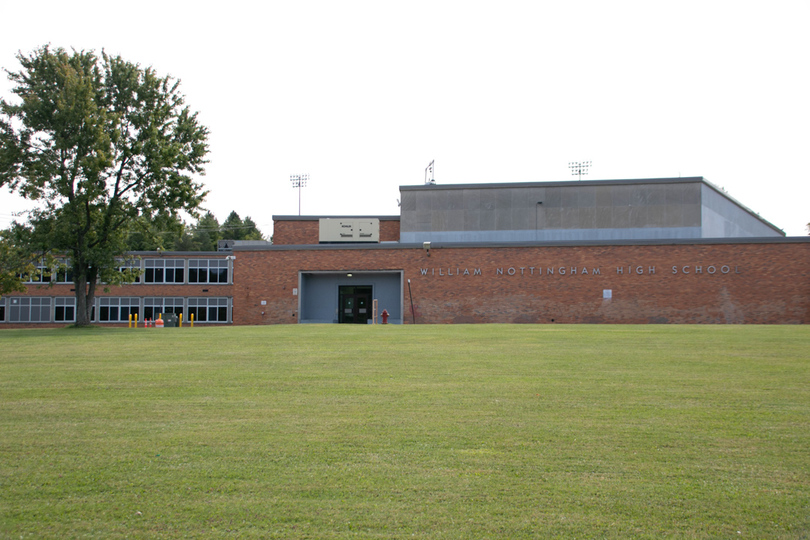The impact COVID-19 had on mental health within the Syracuse City School District

Elizabeth Billman | Senior Staff Photographer
This week, SCSD is starting a new academic year — its third impacted by COVID-19.
Get the latest Syracuse news delivered right to your inbox.
Subscribe to our newsletter here.
Joe Bennett reflected on teaching science classes in the Syracuse City School District this past year through the pandemic.
“I felt like I was almost more of a counselor than a teacher last year,” Bennett said.
This week, SCSD is starting a new academic year — its third impacted by COVID-19. Staff and students at the school have faced many challenges due to the pandemic, including those related to mental health.
Even before the pandemic, the United States was undergoing a mental health crisis, said Jennifer Rapke, a clinical psychologist and chief of the child psychiatry consultation liaison service at Upstate Golisano Children’s Hospital.
A study conducted at the University of Arizona early into the pandemic found that major depression was 2.9 to 3.5 times higher than before the pandemic. The study also found that after the onset of the pandemic, general anxiety disorder was 10.3 to 15.8 times higher, and acute-stress/post-traumatic stress was 3.5 to 4.0 times higher.
“COVID was like taking gasoline and throwing it on a fire,” Rapke said of the pandemic’s ability to disrupt typical mental health trends.
COVID was like taking gasoline and throwing it on a fireJennifer Rapke, a clinical psychologist at Upstate Children’s Hospital, on the pandemic’s ability to disrupt typical mental health trends
This year, SCSD is returning to five day, in-person instruction, with students following what Bennett said is a more “normal” schedule, similar to the one they had before COVID-19. Bennett is worried that some mental health problems that students may have faced last year will appear again this upcoming year, though.
Rapke believes that a return to previous academic rigor may lead to issues with student mental health.
“If we went from fairly lenient, fairly developmentally friendly, to ‘Nope, you’re right back to where you were,’ that’s going to be a lot to ask of kids that maybe are behind,” Rapke said.
Mayra Ortiz, the director of student support services and guidance for SCSD, said that the district will continue to uphold high expectations for its students.
“While we were definitely understanding of student circumstances, our goal was to provide the … best professional product that we can provide,” Ortiz said.
Ortiz also acknowledged the academic challenges that COVID-19 presented and continues to present to students. SCSD will look at pacing charts, add support to enhance its practices and take other measures to keep students on track, she said.
To curb anxiety amongst students, Rapke said that clear communication will be an important task for the school district to take on this year.
“If we don’t know what to anticipate, our mind wanders and worries and imagines these crazy things,” Rapke said. “And that causes anxiety.”
Schools that have done well over the pandemic have been “pre-teaching” both students and parents, Rapke said. This style of communication has included sending out informational videos explaining what school will look like during COVID-19 to families to then show their children, Rapke said.
Throughout a more isolated version of schooling, the pandemic has affected teachers’ mental health as well, Bennett said, and many teachers faced similar feelings and realities of isolation over the past eighteen months.
An increased amount of socialization associated with full-length in-person learning will greatly benefit both student and teacher mental health outcomes, Bennett said.
Along with students, parents were a “forgotten population” during the pandemic, Rapke said, adding that whenever a parent is struggling, children may absorb that, and it can influence their behavior.
Parents need to understand that to properly help their own children, they need to be in a good place, Rapke said. She used oxygen masks on a plane as an analogy.
“We’re supposed to put our mask on first so that then we can put that mask on our own child,” Rapke said. “But every parent that you talk to is going to say, ‘Oh my god, no, I’m going to put the mask on my kid before I put it on myself.’”
One of the most important things to do for children during the pandemic is to keep the lines of communication open with them, Rapke said.
“The last thing we want is a kiddo suffering in silence,” she said.





